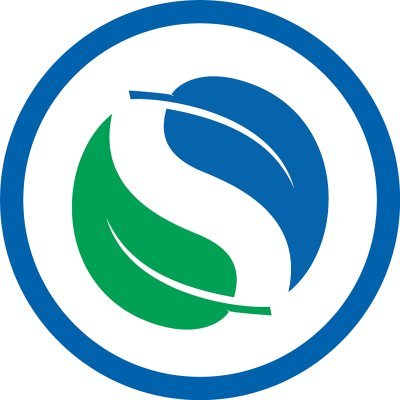Score: 660 GMAT Classic
GPA: 3.5
Pre-MBA industry: Consulting
Post-MBA industry: Consumer Products
Question 1)
Details of project I have completed at work
Automation in Tools:
Situation:
Explaining a specific scenario, we receive a task related to site circumvention approximately every week. This task involves raising multiple subtask JIRAs for various teams to execute specific activities (around 16 subtask JIRAs). Previously, manual JIRA creation led to delays, errors, and increased operational costs.
Task:
Recognizing the repetitive nature of JIRA creation with minor changes, the goal was to innovate the JIRA tool and eliminate manual JIRA raising. The objective was to automate the process and avoid the need for manual JIRA creation.
Action:
Identification:
Commenced exploration of automation options within JIRA tools, navigating through JIRA settings.
Rule Creation:
Discovered the "Create a new rule" option under the automation section. Specified conditions like description, site, and approval to trigger the automation.
Action Configuration:
Defined the action to be executed, choosing between "create issue" or "clone issue" to generate a subtask.
Field Mapping:
Copied specific fields from the parent task to the subtask in the field mapping step, ensuring essential information is transferred.
Testing and Saving:
Executed testing and saved the automation rule to ensure it functions as intended. Verified that everything worked seamlessly.
Result:
The automation significantly streamlined the task, reducing the time required from 16 minutes to just 2 minutes. The entire process of issue tracking and project management became more efficient, minimizing errors inherent in manual JIRA creation. Notably, team members were able to shift focus to more strategic activities, enhancing overall productivity.
Client Project Transition
Situation:
Illustrating with a specific example from our project, the ACC Snowplow dashboard, initially managed by the client, was identified as a candidate for transition to our internal team. Recognizing the potential for improved efficiency and project management, the decision to facilitate the handover was made.
Task:
The primary challenge in this task was to engage with the client and secure their agreement for the project transition. Given the involvement of security compliance, an already complex task became even more challenging. A well-prepared roadmap was developed to navigate the client interaction, understanding that a smooth transition not only ensures project continuity but also contributes to positive client feedback and fosters long-term relationships.
Action:
Client Interaction:
Initially, the client exhibited hesitancy regarding the project's ownership transition, citing concerns about potential disruptions and uncertainties, especially in the context of security compliance.
Persuasion Strategy:
Demonstrated previous instances of successful project transitions, highlighting our track record of 100% accuracy and no escalations from clients. Emphasized the team's certifications and competencies to instill confidence.
Showcasing Expertise:
Presented specific examples, such as the handling of Security JIRAs, showcasing our proficiency in managing security-related incidents in past projects. Engaged in multiple rounds of discussions to address client concerns.
Client Confidence Building:
Successfully convinced the client by showcasing the potential benefits our team could bring. The client was assured of a smooth transition based on our expertise and transparent communication.
Result:
The client project transition was achieved successfully, positively impacting project management and collaboration. The client expressed satisfaction with the transparent communication and ongoing support, solidifying our positive working relationship. With a 15-year history of collaboration, our partnership remains robust and continues to thrive.
Subject Matter Expert: Decommission Process
Situation:
I was assigned the role of a subject matter expert for various tools, with a specific focus on the decommission process. Becoming a subject matter expert required an in-depth understanding of the process, which posed a challenge as it was entirely new to me.
Task:
The primary objective was to contribute valuable insights and guidance to the team regarding the decommission process. Given the technical nature of the knowledge required, there was a need to self-educate and quickly familiarize myself with the new process and technology. The project faced challenges due to a lack of specialized knowledge, emphasizing the urgency of my learning curve.
Action:
Assessment of Knowledge Gaps: I began by identifying gaps in my understanding.
Colleague Consultation: I reached out to colleagues with prior experience in handling decommission tasks, learning from their insights.
Knowledge Acquisition: Armed with new information, I initiated the creation of a well-defined decommission process.
Process Definition: The defined process encompassed multiple steps, starting with obtaining managerial approval and implementing a blackout on the server to prevent false alerts.
Team Collaboration: The decommission process involved various teams, each responsible for specific tasks. Collaboration was crucial for seamless execution.
Critical Task - Disk Wipe: The final and critical step in the process was the disk wipe. This involved integrating the server with the virtual console, executing code to perform the wipe, and subsequently closing the JIRA ticket.
Result:
The SME role positively impacted my overall knowledge, decision-making abilities, and collaboration skills. I successfully guided team members through the new process, offering assistance whenever challenges arose. Close collaboration with stakeholders allowed me to understand their requirements and provide valuable insights to enhance the overall success of the
IT Issue Resolution: International Project Example
Situation:
Illustrating the scenario with an example from an international project I am involved in. Our client, Kindred, operates a betting site based in Stockholm. The site experiences significant load during major events, leading to occasional downtime. In response, we have developed a well-defined process to handle priority situations effectively.
Task:
The primary objective during IT issue resolution involves identifying incidents, determining their severity and impact, establishing clear communication channels for incident reporting, and restoring the site to functionality in the shortest possible time. The process includes formulating a detailed incident plan outlining the necessary steps. The ultimate goal is to efficiently address and resolve the incident, minimizing impact and restoring normal operations.
Action:
During the FIFA World Cup, a critical incident occurred due to heavy site traffic from major events and priority matches. In response, I applied the established knowledge and initiated incident resolution. Key actions included identifying the incident cause, assembling a priority team with the approval of the incident manager, and logging detailed incident information, including occurrence time and initial impact assessment. The resolution plan was systematically executed, addressing the root cause. Continuous monitoring ensured system stability. Following resolution, a thorough post-incident review analyzed the cause, response effectiveness, and identified areas for improvement.
Result:
By making minor adjustments to the process, I successfully resolved the incident within the specified timeframe, minimizing downtime and disruption. This achievement earned me a cash reward from the organization. Stakeholders were kept informed through SMS messages at every stage, fostering transparency and trust in the incident management process. A comprehensive incident report was generated, documenting details from the incident's initiation to its resolution.
Question 2)
Details of Digital Certification
I commenced my TCS journey in the role of a Ninja, an entry-level position emphasizing foundational skills in programming, problem-solving, and basic software development. After three years and recognizing the industry shift towards digital technology, I made the decision to transition from a Ninja profile to a Digital profile.
The pathway to transitioning from TCS Ninja to TCS Digital involved successfully cracking the TCS Elevate Wings 1 exam, comprising three Tech Exams and three Non-Tech Exams. To pass the exam, a minimum of one Non-Tech and one Tech exam needed clearance. Opting to take all exams, my choices included three different Tech paths: Core Programming, Core Full Stack, and Certification; and three Non-Tech exams: Biz Skill, Process, and Articulation.
To prepare for the exam, I first familiarized myself with the Statement of Procedure (SOP) to understand eligibility criteria and other conditions. Meeting the requirement of having either Band A or B, I, being in Band A, applied for the exam and commenced preparations. Utilizing various sources, including assistance from colleagues and joining social media groups, I aimed to understand the exam structure.
I successfully cleared two Tech Exams and two Non-Tech Exams, specifically Certification and Core Full Stack under Tech, and Articulation and Process under Non-Tech. For the Core Full Stack, I chose basics of DevOps as my elective, and for Certification, I selected Azure as my elective. Articulation, a test of English skills, encompassed Grammar, Reading Comprehension, and basic etiquette, while Process evaluated Rio and Agile skills applicable in our daily corporate life.
Throughout exam preparation, I had the opportunity to learn various tech and non-tech skills. I explored TCS internal tools like the Ievolve Dashboard and developed fundamental technological skills in DevOps and Data Analytics. Non-tech skills were refined, especially in grammar, decision-making processes through Biz Skill exam preparation.
After learning some important concepts while preparing for the exam, I am able to incorporate the these learning while dealing with the clients. For instance , Now I am aware about what are do's and don'ts while handling the call with the client. I am quickly able to make the decision by doing side by side analysis of the positive and negative impact of the suggestion given by the client or team member.
Clearing the exam not only resulted in a financial reward but also marked a significant progression in my skills and professional stature. I received a promotion to IT Analyst and now oversee a team of five individuals under my supervision.
Question 3)
Weakness with example
I would like to begin by addressing my most significant weakness, which I used to struggle with but have successfully overcome over time. From a young age, I had a habit of procrastinating tasks, regardless of their critical nature. I became aware of this weakness while preparing for a competitive exam.
To overcome this tendency, I implemented a structured approach by creating a daily To-Do list and adopting a proper routine in my life. To provide a more detailed insight, here are a few steps I started incorporating:
I began breaking tasks into smaller steps. For example, during exam preparation, I set daily self-goals to accomplish before the day's end.
I actively worked on eliminating distractions. This included reducing socializing time with friends and dedicating a significant portion of my time to self-improvement. I created a focused environment by spending at least 30 minutes in a closed room, reflecting on my day and visualizing the end results.
The second weakness I encountered was the fear associated with significant days (D day). While it is normal to feel anxiety or pressure on such occasions, my experience was more intense. I often felt immense pressure, making it challenging to concentrate on tasks, be it school exams, final exams, or presenting in front of a large audience. To address this issue, I adopted the practice of meditation, specifically using "Isha Kriya." To further enhance this process, I incorporated deep breathing and relaxation techniques. The final step in my strategy involves simulating task-oriented conditions to anticipate and prepare for the actual event.
After consistently practicing meditation and implementing these techniques for several months, I observed positive changes in my life. Although I still experienced anxiety and pressure on significant days, I found myself more focused and better able to handle the challenges that arose during those times.
Injury in Cricket:
As the captain of your school's cricket team, you were actively pursuing your dream of becoming a cricketer. However, during a crucial school competition, you suffered a knee injury that has had a lasting impact on your ability to play cricket. Despite its seeming minor nature, the injury has become chronic, preventing you from pursuing your passion for cricket. This unexpected turn of events has undoubtedly been a significant setback and has forced you to reconsider your career aspirations in the world of sports.


 copy.png)



 copy.png)
